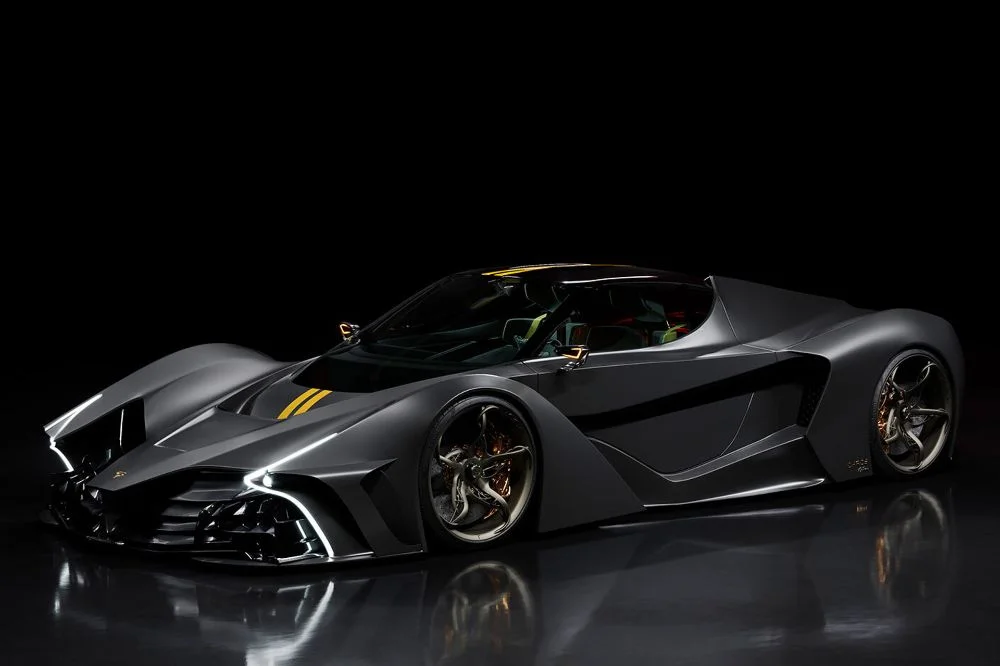The world of hypercars is evolving, and the fastest supercar is no longer just about horsepower. It’s about design, innovation, and futuristic performance that turns fantasy into road reality. While many cars claim top speed titles, only a few earn them with engineering brilliance and aerodynamic mastery.
Today, the title of the fastest supercar is fought among brands pushing the limits of physics. From record-breaking Bugattis to newcomer electric beasts, these machines are more than just fast; they’re history in motion. In this article, we’ll explore some of the fastest cars ever made, their tech, and what makes them truly elite.
The Bugatti Chiron Super Sport: Power Meets Precision
Bugatti has long been the gold standard in the world of high-performance hypercars, and the Chiron Super Sport continues that legacy with authority. Equipped with an 8.0L quad-turbocharged W16 engine, it delivers a breathtaking 1,578 horsepower, allowing it to achieve a top speed of 304 mph. This feat made it the first production car to officially break the 300-mph barrier, securing Bugatti’s place at the forefront of the fastest supercar race.
Beyond its raw speed, the Chiron Super Sport showcases advanced aerodynamic refinements that provide optimal downforce and minimal drag, ensuring stability even at extreme velocities. Every element, from its elongated body to its precision-crafted intake systems, is designed for speed and elegance. It’s not just a machine, it’s a statement of engineering art and aerodynamic brilliance.
Koenigsegg Jesko Absolut: Swedish Thunder

The Koenigsegg Jesko Absolut is Sweden’s unapologetic answer to the fastest supercar race. Engineered specifically for top-end speed, it ditches the traditional rear wing in favor of an ultra-low drag profile, allowing it to slice through air with minimal resistance. With meticulous design, unmatched innovation, and raw power, the Jesko Absolut is set to challenge every existing speed record in its path.
Koenigsegg Jesko Absolut Highlights
- Expected Top Speed: Over 330 mph
- Engine: 5.0L Twin-Turbo V8
- Horsepower: 1,600 hp on E85 fuel
- Design Focus: Minimal drag, maximum stability
- Purpose: Koenigsegg’s fastest creation to date
How Are Supercars Tested for Top Speed?
Testing the fastest supercar requires more than just flooring the throttle. It involves highly controlled environments, typically long, flat, closed tracks like NASA runways or private airstrips. Engineers use advanced GPS telemetry, radar systems, and high-speed cameras to capture top speed data accurately. These tools ensure that every millisecond and mile per hour is recorded with scientific precision.
To ensure fairness and credibility, third-party verification is often required. Test runs are usually performed in both directions to cancel out wind advantages, and average speeds are taken. Variables such as tire temperature, altitude, and air pressure must also be considered, as they significantly influence how a car performs at extreme speeds.
Performance Battle: Electric vs Combustion Supercars

Electric supercars are rewriting speed records with silent but lightning-fast performance. Though combustion engines still dominate in raw sound and tradition, electric motors deliver instant torque and shocking acceleration.
Electric Champions:
- Rimac Nevera: 1.85s (0-60 mph)
- Tesla Roadster (2nd Gen): Predicted 250+ mph
- Lotus Evija: 2,000 hp electric beast
Combustion Icons:
- SSC Tuatara: Claims over 330 mph
- Hennessey Venom F5: Aims for 311 mph
- McLaren Speedtail: Blends top-end speed with elegance
Future of the Fastest Supercar World
As automotive technology advances rapidly, the future of the fastest supercar lies in the fusion of innovation, intelligence, and sustainability. Electric supercars are already challenging combustion dominance, and with the rise of solid-state batteries and high-performance electric drivetrains, we’re entering an era of instant torque and zero-emission speed. Hybrid hypercars will also play a key role, delivering explosive acceleration while balancing efficiency and performance.
The upcoming wave of supercars may rely more on digital integration than mechanical brute force. AI-assisted handling, predictive traction systems, and active aerodynamics will redefine how cars grip the road and cut through the air. These cars won’t just be fast, they’ll be brighter, lighter, and built with surgical precision for ultimate performance at any speed.
What Defines the Fastest Supercar?

The fastest supercar isn’t simply the one with the highest top speed; it’s the result of a balance between power, engineering, and design. A supercar must deliver flawless performance under extreme pressure while also offering precise control and refined luxury. From aerodynamic mastery to next-gen traction, here’s what sets the fastest supercars apart from the rest.
Key Elements That Define the Speed of the Fastest Supercar
- Aerodynamics: Shapes that cut air resistance like a blade
- Lightweight Materials: Carbon fiber and titanium construction
- Horsepower-to-Weight Ratio: More power, less mass
- Advanced Traction Systems: Stay planted at any speed
- Tire Technology: High-speed tires that won’t shred under pressure
Pagani Huayra R: Art That Flies
The Pagani Huayra R is a tribute to design excellence and raw mechanical beauty. Unlike other contenders for the fastest supercar crown, it prioritizes elegance and emotional driving over sheer numbers. With its featherweight build, precision engineering, and a naturally aspirated V12 that sings at high RPMs, the Huayra R delivers a driving experience that feels like art in motion.
Pagani Huayra R Performance Highlights
- Top Speed: 238+ mph
- Engine: 6.0L naturally aspirated V12
- Horsepower: 850 hp
- Focus: Track-only performance with refined aerodynamics
- Build Philosophy: Lightweight chassis, artistic craftsmanship
The SSC Tuatara made headlines in 2020 when it claimed to reach a staggering 331 mph, potentially making it the fastest supercar in the world. However, soon after, experts and enthusiasts began questioning the legitimacy of the run due to inconsistencies in video footage and GPS data. The controversy forced SSC to conduct additional tests, ultimately revealing that the original speed was inaccurate.
After re-testing under more controlled and verifiable conditions, the Tuatara achieved an officially recalculated top speed of around 282.9 mph, still an extraordinary feat. Powered by a monstrous 5.9L twin-turbo V8 producing 1,750 hp, it remains a symbol of American engineering ambition, even if its record-setting dreams were partially derailed.
Hennessey Venom F5: Texas-Built Speed Demon
The Hennessey Venom F5 represents America’s fierce ambition in the fastest supercar arena. Designed and built in Texas, this hypercar is engineered to surpass the 300 mph mark with precision and confidence. Boasting extreme power and a lightweight carbon-fiber monocoque, the Venom F5 blends brute force with aerospace-grade technology to deliver a driving experience that’s both ferocious and refined.
Hennessey Venom F5 Key Specs
- Top Speed Goal: 311 mph
- Engine: 6.6L Twin-Turbo V8
- Horsepower: 1,817 hp
- Construction: Carbon fiber monocoque
- Design Origin: Engineered and built in Texas
Hybrid technology has evolved far beyond its eco-friendly roots and is now powering some of the most thrilling machines on the planet. Automakers are blending high-revving combustion engines with electric motors to produce seamless torque delivery and lightning-fast acceleration. This new breed of performance car doesn’t just reduce emissions, it redefines what’s possible in speed and responsiveness on both road and track.
Leading the charge are models like the Ferrari SF90 Stradale, Lamborghini Sián, and McLaren Artura, each representing a perfect fusion of innovation and exhilaration. These hybrid hypercars strike an ideal balance between explosive performance and efficiency, offering high-voltage excitement without compromising environmental awareness. They prove that sustainability and speed are no longer opposites; they’re allies in automotive evolution.
Conclusion: Fastest Supercar
In today’s high-octane automotive world, the fastest supercar is about more than speed; it’s about innovation, safety, and pushing engineering limits. From the Bugatti Chiron to the electric Rimac Nevera, the landscape is diverse, and the competition is fierce. Whether combustion or electric, these machines represent the pinnacle of human ingenuity.
Their future isn’t just on the road, it’s on the edge of imagination. As technology improves, the next fastest supercar might already be in development, ready to blow past today’s records tomorrow.
And in this race, every second matters.










